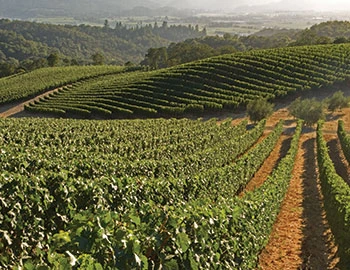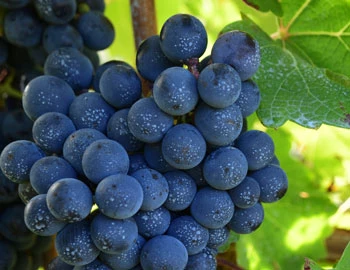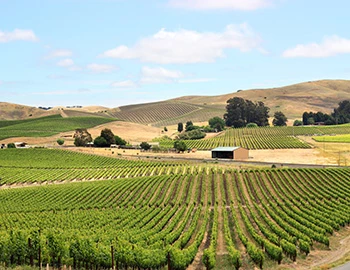
Cabernet Sauvignon Starmont 2018
AVA North Coast, Merryvale Vineyards, 750 ml

| Grape variety: | Cabernet Sauvignon |
| Producer: | Merryvale Vineyards |
| Origin: | USA / California / Napa Valley |
Description
An expressive and elegant Cabernet Sauvignon, with a dark berry and spicy bouquet. On the palate, seductive black fruits unite with subtle roasted aromas and exotic spices. With its ripe, silky tannins, the experience on the palate is totally harmonious and full-bodied.
Attributes
| Origin: | USA / California / Napa Valley |
| Grape variety: | Cabernet Sauvignon |
| Ripening potential: | 3 to 10 years after harvest |
| Drinking temperature: | 16 to 18 °C |
| Food Pairing: | Châteaubriand, Filet Wellington, Goulash, boeuf bourguignon, Saddle of lamb fillet with herb jus, Roasted lamb gigot |
| Vinification: | fermentation in steel tank |
| Harvest: | hand-picking |
| Maturation: | in partly new and used barriques/ Pièces |
| Bottling: | no filtration |
| Maturation duration: | 18 months |
| Volume: | 13.5 % |
| Note: | Contains sulphites |
Merryvale Vineyards
At a young age, Jack Schlatter travelled from Switzerland to Dallas in the 1950s to work in the cotton trade. He later moved to Mexico and São Paulo (as a coffee tester) and back to Zurich to develop the cotton business in the Eastern bloc. But he always had one foot in Dallas and entered the real estate business there. The wine business also appealed to him early on. But it was a while before he met Bill Harlan, the owner of Merryvale.
The winery was founded in 1933 by a group of partners shortly after the Prohibition era ended, and it attracted over the decades several famous personalities as partners, consultants or owners: Peter and Robert Mondavi from the beginning and then Bill Harlan in the 1980s. Jack Schlatter became a fifty-fifty partner in 1991 and brought the winery into the European and Asian markets. He purchased the winery outright in 1994. Today, his son René stands firmly at the helm.
The historic building is located in the south of the small town of St. Helena at the heart of Napa Valley. The winery-owned Estate Vineyards lie to the east of St. Helena at about 280 metres above sea level. Around 10 hectares of Cabernet Sauvignon, Cabernet Franc and Petit Verdot were planted here in 1997. At that time, Michel Rolland was the expert consultant for Merryvale.

Cabernet Sauvignon
The backbone of Bordeaux
The Cabernet Sauvignon gives the Bordeaux its backbone, yielding deep violet wines with powerful tannins and endless ripening potential. It is the top dog in Médoc, and is placed in all five premier crus of Bordelais. When young, it often appears strict and unapproachable, but with advancing years, its tannins round off. It is wonderfully velvety, and yet always maintains its freshness. Typical flavours include cassis, graphite and cedar. Wherever Cabernet Sauvignon is found, Merlot is not far away. It complements the robust structure of Cabernet with softness, fruit and richness. The Cabernet Sauvignon is the most-exported vine in the world. It delivers persuasive qualities in Italy as an ingredient of the Super Tuscan, or as the flagship variety from California. There, it is lovingly titled “Cab Sauv”. Meat fans should be aware that it fantastically accompanies a grilled entrecôte. The family tree of Cabernet Sauvignon is surprising: its parents are Cabernet Franc and the white Sauvignon blanc.

California
California: Lots of fruit and ripe tannins
Around 90 percent of the wine produced in the USA comes from California. The Napa Valley, situated roughly 100 kilometers north of San Francisco, is the most prominent wine region in the western hemisphere. California vintners first caused an international sensation with Chardonnay and Cabernet Sauvignon. Today, however, superior wines are also produced from Pinot Noir, Syrah and other varieties. California’s wine country shows more variety today than ever before.

USA
USA - Yes, they can!
The United States is the third-largest nation on the planet in terms of both land area (after Russia and Canada) and population (after China and India). Every conceivable climate zone can be found in the US, from hot deserts to arctic frost. Thanks to immigration from all over the world, the US is probably the most multicultural country on the planet. Thus it has the ideal conditions for producing internationally recognized wine.


